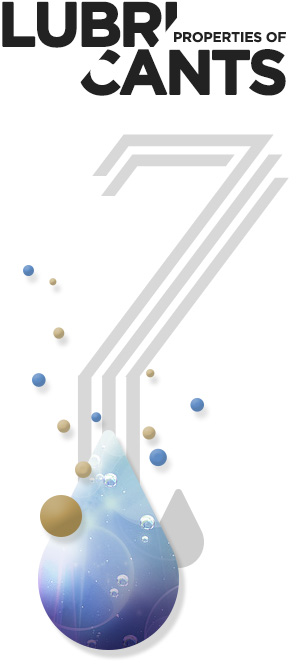BASIC INFORMATION


It is basically required to understand the properties of lubricants and the terms used to describe them in order to select the right lubricant product.
1 .Viscosity
Viscosity is used to measure how thick and sticky the fluid is under certain conditions, which is one of the most important factors to be considered when selecting lubricants. Viscosity is expressed in *cSt or SUS. It is understood that a high viscosity means more thick and sticky. Viscosity is not used to determine the quality of oil. Thus, choosing the right viscosity for each application is important.
* cSt (Centistoke), SUS (Saybolt Universal Viscosity)
2 .Viscosity Index
Viscosity Index (VI) indicates a correlation between the viscosity of lubricants and temperature. Higher VI value implies little viscosity change according to the variation of temperature. Higher VI is more temperature stable, so that the life of oil is prolonged and usage is diversified.
3 .Flash Point & Fire Point
Flash point is the lowest temperature at which the vapor produced by continuous heating of lubricants can be ignited. Fire point is the lowest temperature at which not momentary ignition but continuous ignition is possible. Generally the fire point is higher than the flash point by 20-30 degrees and lubricants cannot be used in the environment higher than the fire point.
4 .Pour Point
If the temperature of a lubricant continues to be lowered, wax is extracted and solidified from it. The temperature right before this phenomenon is the pour point. It does not mean that a lubricant cannot be used in the environment below the pour point. However since this phenomenon may decrease work efficiency, the pour point should be considered especially when selecting engine oil to be used in winter.
5 .Total ACID Number, TAN
Total ACID Number (TAN) indicates the amount of acid component contained in oil and the amount of KOH required to neutralize the acid component contained in 1 gram of a lubricant is expressed in mg. The more a lubricant is used and the longer the mileage is, the higher acid component is in the lubricant, increasing TAN.
6 .Total Base Number, TBN
Total Base Number (TBN) indicates the amount of base component contained in oil and the amount of KOH required to neutralize the base component contained in 1 gram of a lubricant is expressed in mg. The longer the mileage is and the higher TAN is, the lower TBN is.
7 .Oxidation Stability
Oxidation stability is an ability to reduce the lubricant’s rate of oxidation accelerated by high temperature. This property is particularly important to identify the life and storage period of engine oil.


